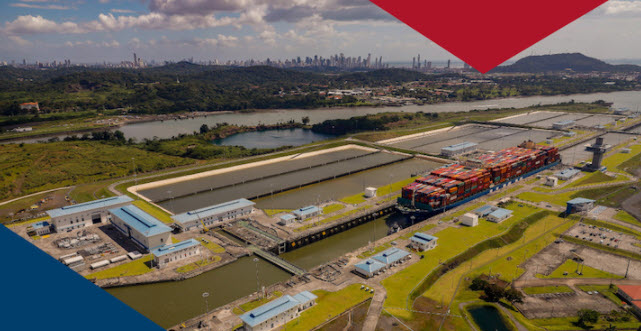Commentary
Some may not know at all, some may have forgotten, but at one time, the Panama Canal was a worldwide symbol of American optimism, spirit, and ascendency to the world stage. After multiple ventures and proposals from Britain and France never really came to fruition in the 1800s, two consecutive French endeavors tried and went bankrupt.
The American Government under the iconic figure of President Teddy Roosevelt, spent two years negotiating with Congress over competing interests, resolving differences on whether to seek a new route through Nicaragua, negotiating a significant discount to the French asking price for the work they had accomplished, and siding with Panamanian separatists over the anemic Colombian central government to start the Canal in 1904 and by 1914 it was opened.
Once opened and operated, the American military fortified the Panama Canal zone and had multiple forts, airfields, naval stations, and other facilities. Until the handover of the canal in 1999, the Panama Canal was used countless times by not only merchant traffic, but by the U.S. Navy to rapidly move ships back and forth from the Atlantic to the Pacific and back. Its role was indispensable for American strategy.
When I first joined the military in the 1980s, duty in the Canal Zone was still considered a prestige, coveted assignment of serving in a living establishment of American greatness. President Carter had different views and had made it a central goal to return the canal to Panama, President Reagan had made retention of the canal a platform theme, but when he assumed the Presidency, committed to honoring the treaty Carter signed.
In 1989, the United States had enough of the corrupt Panamanian President Manuel Noriega who had been on and off the CIA payroll multiple times and invaded Panama from the inside out but followed through and formally transferred the Canal to Panama in 1999. Thus ended Pax Americana on the Panamanian isthmus.
Singapore of the Americas. With China Advancing
The Panama Canal is still considered one of the wonders of the modern world. Since the end of the American era, Panama’s economy has flourished and the canal has been greatly expanded—no longer is the canal limited to the old Panamax standard of 106 ft in width—a huge influence on merchant vessels and U.S. Navy ship design as well.
The Panama Canal is still the core of the Panamanian economy, but worldwide banking and finance has become an additional foundation for the nation. The rapid growth of the economy in Panama has it sometimes referred to as the Singapore of the Americas. The primary difference and obstacle to overcome is still the presence of corruption—but not necessarily the same line of criminal activities of the infamous Noriega.
Many Americans now associate Panama with the Panama Papers and rampant offshore financial activities, and may forget that at one time, the Panama Canal and the Panama Canal Commission were de facto sovereign American territory. For several years, I had a close colleague who retired from Government service and moved to Panama and kept me appraised of goings on—he noted regularly on the absence of Americans and the growing specter of Chinese interests—quite puzzling. The Americans, who had dominated Panama for decades had vanished, but Chinese businesses were rapidly growing. What was going on?
The answer was simple—with the departure of America, Panama was an intuitive geo-strategic outpost for the civil-military fusion of the Chinese Communist Party (CCP) Silk Road strategy. Americans had departed Panama so they could focus on more important things like recycling, electric cars, naval gazing, and ensuring school boards displaced those meddlesome parents as the primary influencers of our children.
Panama was possibly evolving into a distinct outpost in the Americas for China as Dr. Evan Ellis, of the U.S. Army War College Strategic Studies Institute chronicled in detail in multiple articles, studies, and testimonies. In many ways, Panama had no choice.
Americans had evaporated, China was menacing the Panama Canal with a possible deal for a new canal through Nicaragua, and China was happy to offer low rate financing of ports on both ends as well as many other infrastructure projects, including one that caught Dr. Ellis’s attention—a water conservation project that would have significant abilities to maintain the water levels in the canal, or not maintain water levels if there was a failure of the industrial controls of the infrastructure—how convenient.
Integral to US National Security
With relative ease, Secretary of State Mike Pompeo and President Trump dramatically turned things around with Panama through creative use of diplomatic initiatives at the same time that the Chinese advance has apparently run out of gas.
Any Chinese forward movement is unlikely to re-start with Panama sensing the renewed interest in Panama by America and with China suddenly cash strapped. However, significant Chinese interests remain in Panama, and the necessity of the Panama Canal for the execution of American war plans in case of active conflict with the CCP in the Western Pacific make the strategic importance of the Canal more important than ever.
When I see a potentially hostile foreign power with large swaths of docks and warehouses on each end of this vital strategic asset, my national security senses start to tingle. What is going on in those warehouses? They would make ideal, concealed staging areas for drone swarms or other mischief to disable the canal.
Or perhaps one of those giant new containerships navigating the canal could unexplainedly do a hard right rudder in the Panama Canal at the wrong moment like the Ever Given in the Suez in March of 2021. Accident or cyber intrigue? Unclear. What is clear, is that the United States needs to return to Panama in even greater presence as a trusted, co-equal strategic partner with mutual interests with Panama and keep a very close eye on what remains of stalled Chinese Silk Road activities.
Views expressed in this article are the opinions of the author and do not necessarily reflect the views of The Epoch Times.

